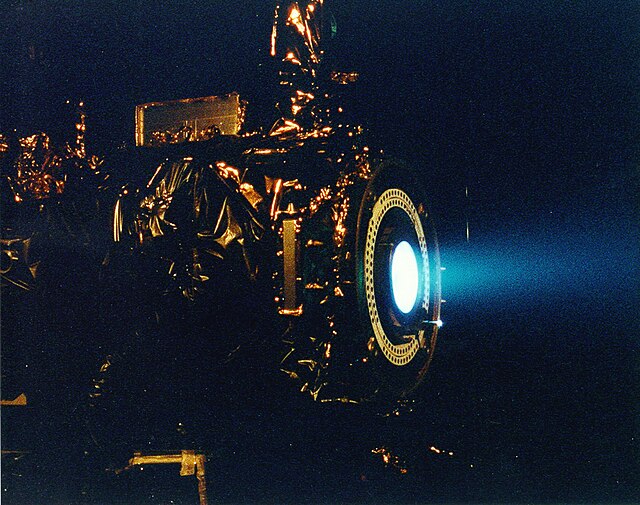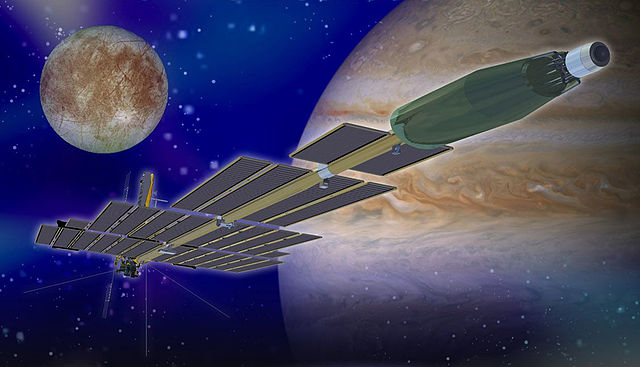Project Prometheus was established in 2003 by NASA to develop nuclear-powered systems for long-duration space missions. This was NASA's first serious foray into nuclear spacecraft propulsion since the cancellation of the SNTP project in 1995. The project was planned to design, develop, and fly multiple deep space missions to the outer planets.
Nuclear reactors could be used to power ion engines such as this one used on Deep Space 1.
Prometheus I (Jupiter Icy Moons Orbiter)
Nuclear propulsion includes a wide variety of propulsion methods that use some form of nuclear reaction as their primary power source. The idea of using nuclear material for propulsion dates back to the beginning of the 20th century. In 1903 it was hypothesized that radioactive material, radium, might be a suitable fuel for engines to propel cars, planes, and boats. H. G. Wells picked up this idea in his 1914 fiction work The World Set Free. Many aircraft carriers and submarines currently use uranium fueled nuclear reactors that can provide propulsion for long periods without refueling. There are also applications in the space sector with nuclear thermal and nuclear electric engines which could be more efficient than conventional rocket engines.
USS Nimitz (CVN-68), lead ship of the Nimitz-class of nuclear-powered aircraft carriers
A Delta-class nuclear-powered submarine
A picture of an Aircraft Nuclear Propulsion system, known as HTRE-3 (Heat Transfer Reactor Experiment no. 3). The central EBR-1 based reactor took the place of chemical fuel combustion to heat the air. The reactor rapidly raised the temperature via an air heat exchanger and powered the dual J47 engines in a number of ground tests.
Bimodal nuclear thermal rockets conduct nuclear fission reactions similar to those employed at nuclear power plants including submarines. The energy is used to heat the liquid hydrogen propellant. The vehicle depicted is the "Copernicus" an upper stage assembly being designed for the Space Launch System (2010).






